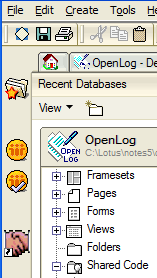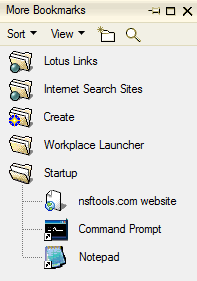Here are some random interesting things I read this week:
Baseball Schedules... Get Your Baseball Schedules Here
"Infuzer, a leading provider of web-to-calendar technology solutions, continues its history of providing the most convenient way for fans to track favorite sports teams with its launch of free schedule downloads for the 2005 Major League Baseball Season. Each free schedule can be added to a user's PC or PDA calendar to quickly and effortlessly keep up with their baseball teams of choice. Infuzer is compatible with the Microsoft Outlook, Palm Desktop and Lotus Notes calendar platforms. Users can select any team schedule to be imported to their PC or PDA calendar. Additionally, users may opt-in to Infuzer's Premium MLB Service, which will send previews, final scores and game recaps directly to the calendar entry."
Java fallout: OpenOffice.org 2.0 and the FOSS community
"Several new features of the recently released OpenOffice.org 2.0 beta require a Java Runtime Environment (JRE). Since Java's license is neither free nor open source, a small but vocal minority has responded both strongly and negatively. For instance, when NewsForge recently published a review of the beta, no other feature attracted as much comment. Some groups, including members of the major GNU/Linux distributions, most of whom repackage OpenOffice.org (OOo), have responded by looking for alternatives, often while cursing the project for the extra work it has dumped on them. How did OpenOffice.org come to rely on Java? What problems is it likely to cause? How are GNU/Linux distributions reacting to this change in a key piece of software?"
DWA (iNotes) Performance Improvements in 6.5.3 fixpack
"With the Domino Web Access 6.5.3 hotfix (included in DWA 6.5.4 and later), Domino Web Access boasts an improvement in client response time of 30 to 40 percent (most notable on low-end machines) over DWA 6.5.3 without the hotfix."
Choose the beach - not the wave
If I tried to quote this entry, I'd end up quoting almost the whole thing. You should really read it yourself. It's an interesting discussion and analogy about the importance of software communities.
I've certainly mentioned before how mad I am that Domino designer
still doesn't have a LotusScript class browser, and has no plans to even think about including one until at least Notes
7.5 (despite previous promises to the contrary, but I won't harp on that).
Luckily, the Lotus community is clever, and people are trying to find workarounds and share them with everyone else. After all, we've been told that to be good little programmers we're supposed to use classes and inheritance and whatnot, which is agonizing at best when your LotusScript class is more than about 50 lines long and you can't find where the friggin' methods start and end. Sorry, harping again...
If you read my blog (which is a good assumption, since you're reading this right now), I'm sure you've also read the numerous mentions in the other Notes blogs about the new TeamStudio ScriptBrowser, which can help you deal with this thorny class problem. I've received about a dozen e-mails about it just this morning, and it looks very promising. I don't have enough experience with it to really review it right now, but you can read several reactions if you check out the Notes blogosphere.
I've also been playing around with the LS Class Buddy tool for a couple weeks, and I've found it very useful. It just opens up a little window next to your designer client, telling you what classes are in the agent or script library you have open, and what methods are in those classes (here's a screenshot if you want to see what I'm talking about). Click on a method, and the Declarations window pane scrolls down to that method definition. Quite handy when dealing with large classes, especially ones you didn't write.
One thing you might have noticed in my screenshot above is that I have a shortcut to the Class Buddy program in the left-hand bookmark bar of my Designer client (it's the picture of two people shaking hands). You may not have known you could do that, but you can just drag a program shortcut from your desktop (or from anywhere, really) to the bookmark bar and then you have easy access to an icon to launch the program. Since I'm only really going to be using Class Buddy in Designer, I dragged it onto the Designer bookmark bar, and it doesn't clutter up the bar in my regular Notes client.

program shortcut in the bookmark bar
|

program shortcuts in the Notes startup folder
|
Along a similar vein, you can also drop a program shortcut into your Notes startup folder (a subfolder of the "More Bookmarks" folder on a standard Notes 6 bookmark bar), so the program launches when the Notes client opens. Obviously, you can also drag URLs, databases, and Notes links to the startup folder (which is what it's for), but a program or two can sometimes be helpful as well.
Sorry, off on a tangent there. Maybe Notes usability guru Alan Lepofsky will have a tip sometime about other interesting things you can do with the Notes client bookmark bar.
;-)
After talking about doing it for a while, I finally registered a
del.icio.us account and started posting some links. Hopefully it'll help me get organized. I've got a lot of catching up to do...
Tonight's early additions:
The coolest magazine in the whole world
Experiments in defeating CAPTCHA login validation implementations
Desktop wallpaper that makes a laptop screen seem transparent. Fascinating.
Funny reviews of the mistakenly posted "Viewsonic laptop" with a 10 GHz processor and 30,000 GB hard drive on Amazon (via
techdirt)
More interesting discussion about possibilities of IM and presence awareness on Tivo
Interesting discussion about possibilities of IM and presence awareness on Tivo
Here are a few things I've been meaning to link to for a while, but haven't gotten around to:
I just finished putting together an example of using JavaScript to gradually enlarge or shrink an image on a page, much like the icons on the Mac OS X icon dock bar. My example page uses it for mouseover effects, but there might be some other interesting applications as well.
Gradual Image Resizing Using JavaScript
I first saw this technique on the short-lived Google X page. Google X has since been pulled -- see this entry on ElliottBack.com for details and a look at what the page looked like.
It's very possible that this is something that other people have been doing for years and I'm just getting around to seeing it. It was new to me though, and I thought it was cool.
Via
Brian Benz, I read the press release about
the upcoming Yahoo 360 service:
Available March 29, the free test will integrate Yahoo's existing products, such as instant messenger, photos, local search, music and groups with new offerings such as blogs, mobile blogs and sharing tools for recommending movies, restaurants and other items.
Sounded interesting, so I found the information page, which had a link to the beta registration page. Strange thing is, the registration page was totally different in Firefox and Internet Explorer. Take a look (click on either image to see a larger picture):

Internet Explorer
|

Firefox
|
Weird. That's not just a different page, but on Firefox it looks like you can actually sign up, and on IE it looks like it's restricted to internal Yahoo employees only.
Maybe they're restricting the signup to Firefox users only. HA! That would be great.
CLARIFICATION: Ashish Sidapara said that he was getting the same page in both browsers, and pointed out that the URL is different in my two screenshots. That's because on IE, I'm getting redirected to the "https://guesthouse.corp.yahoo.com/login?url=..." URL automatically when I try to go to "http://360.yahoo.com/reg/beta_list.html". No idea why.
As a follow-up to my earlier blog entry about
problems using the @Round function, here's a way to work around the problem.
If you want to round a number to a precision of less than one -- for instance, if you want to round 3.35 to 3.4 -- you should multiply the number by the appropriate factor of 10 first, then round it, and then divide the result by the same factor of 10. For example, instead of this code:
newNum := @Round(oldNum; 0.1);
you should use this code:
newNum := @Round(oldNum * 10) / 10;
That will give you consistent results and keep you from running into the problems we saw before. The results will always round numbers ending in 5 upwards (which I still think is wrong -- see my previous entry), but at least they will be predictable.
If you read the comments of the previous entry, you'll see that Damien Katz indicated that the problem all stems from floating point conversion issues. I followed up with a couple examples of how "normal" looking decimal numbers can end up being infinitely repeating binary numbers. If you are curious about how to perform such a conversion (fractional base 10 to fractional binary), here's an agent I put together for you to play with:
BinaryFractions.lss
On a related topic, I also have some LotusScript functions in my aging Unfinished LotusScript Book that will convert numbers from base 10 to any base, or from any base to base 10 (look in the "Numbers" chapter). If you need that sort of thing.
If you've tried the new
Google Maps service, you probably noticed that you can do cool searches like "pizza in Atlanta" or "hotels near LAX", and it will return a list of local businesses that match your criteria.
Like anything else, if you apply a little creativity to the situation, you can get some interesting results. Here are a few searches I did today (along with images of my results, in case they're different tomorrow):
- "indecision in washington dc" (image)
- "weakness in boston" (image)
- "naked in tallahassee" (image)
- "sleazy in los angeles" (image)
See what you can find.
The other day I was reading through the
Zend Core for IBM technical roadmap, trying to make sense of the whole IBM/Zend/PHP thing, and I saw this section:
The DB2 and Cloudscape extension for PHP is a new database-specific extension that IBM will contribute shortly to the PHP Extension Community Library (PECL) under the Apache License Version 2.0. Given the effort to define a common database interface for PHP 5 through PDO, and the basic support offered by Unified ODBC in PHP 4, this might seem like an odd action. However, IBM developed and contributed this extension to satisfy the growing demand for an extension that can fully exploit DB2 and Cloudscape features in PHP 4.
The majority of production PHP servers today still run PHP 4, and that balance is not expected to shift to PHP 5 until sometime in 2006. Rather than overloading the Unified ODBC extension with even more #ifdefs for specific DB2 requirements, IBM made the decision to write a new extension from scratch. And because IBM is contributing the code to the open-source community, the community has the opportunity to reuse any of that code in PDO_ODBC or other drivers. The API for the DB2 and Cloudscape extension is largely compatible with the Unified ODBC extension, and the new extension is officially supported by IBM in both PHP 4 and PHP 5 environments, so PHP developers have a solid, fully-functional platform on which to build applications which need to run on PHP 4.
I've been playing around with PHP quite a bit in the past few months (and I really like it, but I'll discuss in detail some other time), and of course I've been using MySQL for a database backend. I mean, that's what you use with PHP, right? I'll make the occasional ODBC connection if I'm backed into the corner, but MySQL is where it's at.
Native Cloudscape (nay Derby) support is pretty darn interesting though. Not to knock DB2 integration, but the whole thing about MySQL is that you already have to have it loaded and set up with your user accounts and databases and tables in order to use a PHP application that relies on it.
But Cloudscape is portable. No installation required. All you need is Java and the right set of JAR files. So does that mean that I can build a PHP app that uses Cloudscape on the backend, and then just zip up all the PHP pages along with the Cloudscape database and hand it off to someone? And then they can just copy everything over and use it without having to set anything up? Hmm, useful.
In fact, I guess you could write the app to create the Cloudscape database if it doesn't already exist, and then you wouldn't even need the database file. Just give someone the PHP and it sets itself up. Database on demand. No fooling with user accounts and privileges and schemas and whatnot.
That would be cool.
It all started when I got a new
Tiger Direct catalog this past week, and as I put it away on the bookshelf I saw that I had another Tiger Direct catalog up there -- from 5 years ago. That was kind of amusing: 128 MB SIMM memory for $169, Pentium III 500 MHz machines for $869, 4x CD-RW drives for $154.
So I started digging through some of my other older magazines, and decided to scan a few interesting things (they're in PDF format, but you'll probably want to print them out to read them).
Boardwatch Magazine, September 1995
A long time ago, I was a BBS sysop, so I subscribed to Boardwatch Magazine, "The Guide to Electronic Bulletin Boards and the Internet". It had a lot of BBS phone numbers, along with articles about BBS and early Internet technology (PPP vs. SLIP, gopher, stuff like that) and regular columns about CompuServe, America Online, and Prodigy. I scanned the cover, along with:
- ads for Galacticomm, TBBS, Excalibur BBS, and QModem Pro (note the emphasis on smirking, lusty girls in the Excalibur and QModem Pro ads -- BBS sites weren't all for business).
- An article by Jack Rickard, the magazine's editor, discussing how far they've come since the first issue in 1987.
- An editorial by John Dvorak questioning whether there will ever be useful "free" information on the Internet ("if it's free information, it's probably NOT what you really want and probably not valuable").
Boardwatch1995.pdf (4.5 MB, 100 dpi)
Dvorak article, page 1 and page 2 (1.5 MB total, 200 dpi)
PC Sources Magazine, December 1990
This was one of those computer parts catalogs/magazines I used to get every month or so. Each issue was about 600 pages long, with a few technical articles about buying and installing computer hardware, and hundreds of ads. I scanned the cover, along with:
- An article about how the IBM and Microsoft relationship was "on the rocks" due to competition between OS/2 and Windows 3.0. Includes a quote from Esther Dyson saying, "It's not a divorce, but it's a postnuptial agreement. It's clearly a sign that we're going to have several different versions of DOS and OS/2 out there, and that's very unfortunate. The net effect is confusion."
- An article on popular computer games to buy for Christmas (Railroad Tycoon, Qix, Ultima VI).
- An article on how to choose a hard drive ($300 for a 40 MB IDE).
- Product reviews of a Dell 386 with 4 MB of RAM, a Hayes 9600 modem (retail price $1199), ccMail 3.15, Lotus 123 3.1, Wordstar 6.0, Word for Windows 1.1, and an HP LaserJet III.
- Random ads for hardware and software.
PCSources1990.pdf (9.0 MB, 100 dpi)
IBM Microsoft article, with Esther Dyson quote (0.7 MB, 200 dpi)
National Geographic article entitled "Behold the Computer Revolution", November 1970
Okay, I didn't exactly buy this magazine when it was on the newsstands, but I happen to own it, and it's got a fascinating article about the use of computers in 1970.
It's a 41 page article, and I actually scanned it twice: once at 100 dpi in color, and once at 200 dpi in black and white. The 100 dpi color version is readable when you print it, but a little fuzzy. The 200 dpi B&W version is much easier to read, but the file size is much larger. First I tried to convert it to PDF, but that ended up being almost 78 MB, so then I just took all of the page scans and put them in a zip file as individual JPGs (which was only about 23 MB total).
NatGeoComputers1970.pdf (10.0 MB, 100 dpi color)
NatGeoComputers1970BW.zip (22.3 MB, zip file of individual 200 dpi black and white jpeg page images)
I may have to take down the larger black and white zip file, if my bandwidth use starts getting out of hand (or if National Geographic asks me to pull it :-). Get it while it's hot.
Via
an AP story from yesterday:
Scientists working with powerful imaging computers say the "Hobbit" fossil recently discovered in Indonesia has distinctive brain features that could justify its classification as a separate -- and tiny -- human ancestor.
The report, published Thursday in the online journal Science Express, seems to support the idea of a sophisticated human dwarf species marooned for eons while modern man proliferated.
Other interesting stories about it at The Times Online and azcentral.com, among other places. There will also be a show next week on the National Geographic channel called Tiny Humans: The Hobbits of Flores.
One of my friends at work alerted me to the
Numa Numa Dance video today (make sure you have your speakers and your browser ad blocker on). Now that's what the Internet is all about, a vehicle for watching videos of young computer guys dancing to Romanian house music in front of a webcam.
Apparently the guy who's on the video has practically gone into hiding, after being talked about and/or interviewed by Good Morning America, the Today Show, the New York Times, and even CNN. Strange world we live in, huh?
Personally, I immediately thought of the Biscuitman video when I saw it (which is over a year old now... my how time flies).



